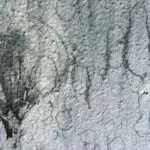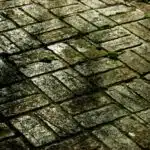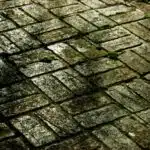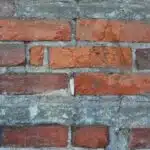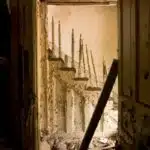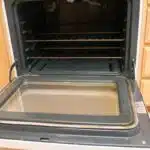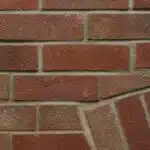Maintaining a clean and well-functioning fireplace is essential for every homeowner who desires warmth and comfort in their living space. However, cleaning fireplace bricks can be a daunting task for those who lack the necessary knowledge and expertise. As a fireplace cleaning expert, I understand the importance of keeping your fireplace clean and presentable, which is why I have put together this informative article on how to clean fireplace bricks.
Fireplace bricks are prone to soot accumulation, which can make them look unsightly and even affect the performance of your fireplace. Cleaning these bricks requires more than just a simple wipe down with soap and water. It involves using specialized tools and techniques to get rid of stubborn stains without causing damage to the brick surface. In this article, I will provide you with practical tips on how to effectively clean your fireplace bricks, ensuring that your home remains warm, cozy, and inviting all year round.
Understanding The Importance Of Fireplace Maintenance
Regular fireplace maintenance is crucial for ensuring the safety and longevity of your fireplace. Neglecting to clean your fireplace regularly can lead to a buildup of creosote, a highly flammable substance that can ignite and cause a chimney fire. Additionally, neglecting maintenance can result in the accumulation of debris such as leaves, branches, and bird nests, which can obstruct the airflow and ventilation systems. This can lead to an increased risk of carbon monoxide poisoning.
The importance of regular cleaning cannot be overstated when it comes to maintaining your fireplace’s functionality. Cleaning not only prevents hazardous substances from accumulating but also ensures that your fireplace is operating efficiently. A clean fireplace will burn more efficiently, producing less smoke and soot buildup while also reducing the amount of pollution in the air.
Neglecting regular cleaning may seem harmless at first glance, but it poses numerous hazards that could put you and your family at risk. It is essential to keep up with regular maintenance tasks such as cleaning to ensure that your fireplace operates safely and efficiently.
To prepare your fireplace for cleaning, there are specific steps you need to follow. These steps will ensure that you have everything you need for a successful cleaning session without putting yourself or others at risk.
Preparing Your Fireplace For Cleaning
Cleaning a fireplace is not merely a chore; it is an art that demands expertise, patience, and discipline. Before you begin the cleaning process, there are a few things you need to do to prepare your fireplace for cleaning. The first step is clearing the area around the fireplace. Remove any furniture or other decorative items that may obstruct your movement while cleaning.
Once you have cleared the area, it’s important to put on protective gear before starting the cleaning process. Protective gear includes gloves, goggles, and a mask. Gloves will protect your hands from sharp edges or hot surfaces while goggles will protect your eyes from dust and debris. A mask will help prevent inhalation of ashes and soot.
When preparing your fireplace for cleaning, remember that safety should always come first. Taking these precautions can help prevent accidents and injuries while making the cleaning process easier and more efficient. In the next section, we’ll discuss gathering the necessary tools and materials needed to clean your fireplace thoroughly without damaging it in any way.
Gathering The Necessary Tools And Materials
- A broom is essential for sweeping up accumulated dust and debris from the fireplace bricks before applying any cleaning solution.
- A vacuum with a dust brush attachment is ideal for reaching in between tight spaces and corners of the fireplace bricks.
- A dustpan is useful for collecting and disposing of the debris that has been swept up by the broom.
- Gloves should be worn to protect hands from cleaning chemicals and sharp edges of the fireplace bricks.
- Buckets are necessary for mixing cleaning solutions and for rinsing the fireplace bricks.
- Detergent, a sponge, a scrub brush, steel wool, and a wire brush should all be used for scrubbing the fireplace bricks as needed.
Broom
Fireplace cleaning can be a daunting task, especially if you are not familiar with the right tools and techniques. One crucial tool that you will need when cleaning your fireplace is a broom. While there are several types of brooms available in the market, it is important to choose the one that is suitable for your specific needs.
When selecting a broom for fireplace cleaning, it is essential to consider its sweeping techniques. Some brooms are designed to sweep only fine dust particles, while others can handle larger debris such as ash and soot. It is also important to choose a broom with stiff bristles that can easily reach into tight spaces and corners.
Overall, choosing the right broom is key to ensuring that your fireplace bricks are cleaned effectively. With the proper sweeping techniques and the right type of broom, you can make sure that every nook and cranny of your fireplace is free from dirt and debris. So take your time when selecting a broom and invest in one that will serve you well for years to come.
Vacuum
When it comes to fireplace cleaning, having the right tools and materials is crucial to ensure that the job is done effectively. One tool that has become increasingly popular for cleaning fireplace bricks is a vacuum. The benefits of using a vacuum include its ability to quickly and efficiently remove ash and soot from hard-to-reach areas, such as tight corners and crevices.
However, it is important to note that vacuums also have limitations when it comes to cleaning fireplace bricks. For instance, vacuums may not be able to remove all debris from deep within the bricks or grout lines. Additionally, if the vacuum is not equipped with a filter designed for capturing fine particles, it can release harmful particles back into the air.
Overall, while using a vacuum can be beneficial for cleaning fireplace bricks, it should not be solely relied upon for a thorough clean. It is recommended to use other tools in conjunction with a vacuum to ensure that every nook and cranny of your fireplace is free from dirt and debris. By combining different techniques and tools, you can achieve a clean fireplace that will not only look great but also function efficiently.
Dustpan
As a fireplace cleaning expert, I know that having the right tools and materials is essential to ensure that the job is done effectively. Along with a vacuum, another tool that has proven useful for gathering ash and soot from fireplaces is a dustpan. While vacuums are great for hard-to-reach areas, dustpans are perfect for collecting debris from larger surfaces.
When it comes to using a dustpan for fireplace cleaning, it is important to choose the right type of dustpan. One of the best types of dustpans for fireplace cleaning is a metal pan with a long handle. This type of dustpan allows you to easily sweep up ash and soot without getting too close to the flames. Additionally, metal pans tend to be more durable than plastic ones and can withstand high temperatures.
Using a dustpan in combination with other tools such as brushes and scrapers can ensure that every nook and cranny of your fireplace is clean. However, it’s important to note that using a dustpan alone may not be enough to thoroughly clean deep crevices or grout lines. Ultimately, by understanding the benefits of using different tools including vacuums and dustpans, you can achieve an efficient and thorough clean for your fireplace.
Protecting Yourself And Your Surroundings
When cleaning fireplace bricks, it is important to ensure that you protect yourself and your surroundings. Protective gear is crucial when handling cleaning products. Gloves, eye protection, and a face mask will help prevent skin irritation, eye damage, and breathing difficulties. It is also important to cover any nearby furniture or flooring with plastic sheets or drop cloths to prevent any accidental spills or splatters from damaging the surrounding areas.
Using the right cleaning products will make all the difference in effectively removing soot and grime from fireplace bricks. There are many options available on the market, including natural solutions such as vinegar and baking soda or commercial cleaners specifically designed for fireplaces. Always read the labels carefully before use to ensure that you are using the appropriate product for your specific type of fireplace brick.
Remember to always follow safety protocols when handling cleaning products, especially those that contain harsh chemicals. Wear protective gear at all times and ensure adequate ventilation in the room. With proper care and attention, you can safely clean your fireplace bricks without risking harm to yourself or your surroundings.
- Protecting yourself and your surroundings should be a top priority when cleaning fireplace bricks.
- Wearing protective gear such as gloves, eye protection, and a face mask can prevent skin irritation, eye damage, and breathing difficulties.
- Covering nearby furniture or flooring with plastic sheets or drop cloths can prevent accidental spills from damaging surrounding areas.
With these safety measures in place, you can confidently begin removing loose debris and soot from your fireplace bricks.
Removing Loose Debris And Soot
As a fireplace cleaning expert, it is essential to remove loose debris and soot before using any cleaning solution. Loose debris and soot can clog the chimney, which can be dangerous in the long run. Removing loose debris and soot is also crucial to ensure that the cleaning solution reaches all parts of the fireplace brick and does not mix with debris.
One way to remove loose debris and soot is by using a vacuum cleaner or a brush. A vacuum cleaner can be used to suck out loose debris, while a brush can be used to loosen up stubborn soot stains. It is recommended to wear gloves and a mask when cleaning the fireplace bricks. This will prevent skin irritation from contact with dirt and dust particles, as well as reduce exposure to harmful chemicals present in the dirt.
Another effective method for removing loose debris and soot involves using vinegar solution or baking soda paste. The vinegar solution should be mixed with equal parts water, then applied on the brick surface using a spray bottle. The baking soda paste should be made by mixing baking soda with water until it forms a thick paste, then applied directly onto the brick surface. Both solutions are natural, non-toxic alternatives that are safe for use on fireplace bricks. These methods are effective at removing tough stains without causing damage to the brick surface.
When choosing the right cleaning solution for your fireplace bricks, it is important to consider factors such as effectiveness, safety, and ease of use. There are many commercial cleaners available in the market that claim to clean fireplace bricks effectively; however, they may contain harmful chemicals that pose health risks if not handled properly. It is recommended to choose non-toxic natural alternatives like vinegar solution or baking soda paste that are gentle on brick surfaces but still effective at removing stains.
Choosing The Right Cleaning Solution
When it comes to cleaning fireplace bricks, choosing the right cleaning solution is crucial. Using the wrong cleaning agent can damage your brickwork and cause permanent discoloration. As a fireplace cleaning expert, I recommend selecting eco-friendly options that are gentle on your brickwork.
Before applying any cleaning solution to your fireplace bricks, it’s important to test the solution on a small area first. This will help you determine if the cleaner is effective without causing any damage to your brickwork. To test the solution, apply a small amount of the cleaner to an inconspicuous area and let it sit for several minutes before wiping it away with a damp cloth.
When choosing an eco-friendly cleaning solution for your fireplace bricks, there are a few options to consider. First, you can use a natural vinegar and water solution. Simply mix equal parts vinegar and water in a spray bottle and apply it directly to your bricks. Alternatively, you can use a commercial eco-friendly cleaner that is specifically designed for fireplace brick cleaning. Look for products that are free from harsh chemicals and are environmentally friendly.
As you move on to mixing and applying the cleaning solution, keep in mind that using too much water can weaken your mortar joints or create additional stains on your brickwork. In the next section, we’ll discuss how to mix and apply your chosen solution effectively while minimizing any potential damage to your bricks.
Mixing And Applying The Cleaning Solution
- The cleaning solution should be mixed in a sealed container, using equal parts of water and baking soda.
- The solution should then be applied to the fireplace bricks using a soft-bristled brush for scrubbing.
- It is important to wear protective gear, such as gloves and a mask, when applying the solution.
- The solution should be allowed to sit on the bricks for approximately 15 minutes before scrubbing.
- After scrubbing, the solution should be rinsed off with a garden hose or a bucket of clean water.
- Any remaining residue can be removed with a soft cloth or a toothbrush.
Preparing The Solution
As a fireplace cleaning expert, the first step in cleaning fireplace bricks is preparing the solution. The mixing solution is crucial for removing soot and creosote buildup from your brickwork. There are several recipes for making cleaning solutions, but the most effective one involves using trisodium phosphate (TSP), which is a powerful cleaner that removes even the toughest stains.
To prepare the solution, you will need to wear gloves and protective gear as TSP can be harmful to skin and eyes. Begin by mixing 1 cup of TSP with 3 cups of warm water in a bucket. Stir until completely dissolved. Next, add 1 cup of bleach to the mixture and stir well. This solution will be highly concentrated, so it’s important to follow instructions carefully while mixing.
Now that you have prepared the cleaning solution, you can apply it to your fireplace bricks. Using a stiff-bristled brush, dip it into the mixture and scrub the bricks thoroughly. Be sure to wear gloves throughout this process as TSP can irritate your skin. Once you have finished scrubbing all areas of your fireplace bricks, let them sit for at least 30 minutes before rinsing with clean water. This time allows the solution to penetrate deep into the surface and loosen any stubborn dirt or grime that may remain on your brickwork.
Applying The Solution
After mixing the cleaning solution, the next step is to apply it to your fireplace bricks. This is where DIY and professional methods differ. While a DIY approach may be more cost-effective, professional cleaners have access to stronger solutions and specialized tools that can clean your fireplace bricks more effectively. However, if you choose the DIY route, it’s important to use appropriate protective gear and follow instructions carefully.
When it comes to choosing between homemade or store-bought solutions, there are pros and cons to both. Homemade solutions such as TSP mixtures can be effective at removing tough stains but may require more effort in preparation and application. Store-bought solutions, on the other hand, can save time as they come ready-to-use but may contain harsh chemicals that could damage your brickwork if used improperly.
Regardless of which method you choose, applying the solution requires careful attention to detail. It’s important to work in small sections at a time and avoid letting the solution dry on the surface of your bricks. After applying the solution with a brush, let it sit for at least 30 minutes before rinsing thoroughly with clean water. Once you’ve finished rinsing all areas of your fireplace bricks, allow them to air dry completely before using your fireplace again. By following these steps carefully, you can ensure that your fireplace stays clean and functional for years to come!
Cleaning Residue
Once you’ve mixed and applied the cleaning solution to your fireplace bricks, you may encounter some stubborn stains or smoke discoloration that won’t come off with a simple rinse. In these cases, it’s important to use specific techniques for removing residue without damaging the brickwork. One effective method is using a stiff-bristled brush to scrub away any remaining dirt or soot. Be sure to work in small sections and rinse thoroughly with clean water after each area is cleaned.
For more difficult stains, you can try using a paste made from baking soda and water. Apply the paste to the affected area and let it sit for at least 10 minutes before scrubbing with a brush and rinsing with warm water. If this doesn’t work, you may need to use a specially formulated cleaner designed for removing tough residues on brick surfaces.
When dealing with smoke discoloration, you may need to use an acid-based cleaner such as muriatic acid. However, it’s important to exercise caution when handling this type of cleaner as it can be dangerous if not used properly. Always wear protective gear such as gloves and goggles, and follow instructions carefully. With patience and persistence, even the most stubborn stains and discoloration can be removed from your fireplace bricks without causing damage.
Scrubbing And Brushing The Bricks
Have you ever wondered how to effectively scrub and brush fireplace bricks? Well, look no further! As a fireplace cleaning expert, I have curated the best cleaning techniques to help you achieve a clean and polished look for your fireplace.
To begin, let’s discuss the types of brushes that are best for cleaning fireplace bricks. A stiff-bristled brush or wire brush can be used to effectively remove dirt and soot from the surface of the bricks. However, it is important to note that softer bristled brushes should be used on delicate brick surfaces to avoid any damage. It is also recommended to use a vacuum cleaner with a soft brush attachment to remove loose debris before using any type of brush.
When it comes to cleaning techniques, it is crucial to work in small sections at a time. Start by wetting the surface of the brick with warm water and then apply a cleaning solution or vinegar mixture onto the bricks. Use the stiff-bristled brush or wire brush in circular motions to scrub away any dirt or soot buildup. Rinse with warm water and repeat until all sections have been cleaned thoroughly.
Now that you know about types of brushes and best cleaning techniques for scrubbing and brushing fireplace bricks, let’s move on to removing stubborn stains and buildup without damaging your brickwork.
Removing Stubborn Stains And Buildup
When it comes to cleaning fireplace bricks, you may encounter stubborn stains and buildup that require extra attention. Understanding the types of stains you are dealing with can help you choose the right DIY cleaning methods.
Types of stains that commonly occur on fireplace bricks include smoke stains, soot buildup, and water damage. Smoke stains are caused by incomplete combustion and can leave a yellowish-brown residue on bricks. Soot buildup is a result of burning wood or coal and can create a dark layer of carbon on the surface. Water damage occurs when moisture seeps into the bricks, causing discoloration and sometimes even mold growth.
To remove these stubborn stains and buildup from your fireplace bricks, there are several DIY cleaning methods you can try:
- Baking soda paste: Mix baking soda with water to make a thick paste. Apply the paste to the stained areas and let it sit for 10-15 minutes before scrubbing with a brush.
- Vinegar solution: Mix equal parts white vinegar and water in a spray bottle. Spray the solution onto the stained areas and let it sit for 5-10 minutes before wiping clean with a cloth.
- Commercial cleaners: There are many commercial cleaners available specifically designed for removing fireplace brick stains. Be sure to follow the instructions carefully and wear gloves to protect your hands.
By understanding the types of stains you are dealing with and using these DIY cleaning methods, you can effectively remove stubborn stains and buildup from your fireplace bricks. In the next section, we will discuss how to properly rinse and dry your bricks after cleaning them to ensure they look as good as new.
Rinsing And Drying The Bricks
After scrubbing the bricks with your chosen cleaning solution, it is time to rinse them off. There are two ways to do this: wet cleaning or dry cleaning. Wet cleaning involves using a bucket of clean water and a sponge or cloth to wipe down the bricks. This method is effective for removing any remaining dirt or grime from the surface of the bricks.
Dry cleaning, on the other hand, involves using a vacuum cleaner or brush to remove any loose dirt or debris from the bricks. This method is best used in conjunction with wet cleaning, as it ensures that all dirt and debris has been removed before moving on to drying the bricks.
If you have access to a pressure washer, this can be an effective tool for rinsing off your fireplace bricks. However, it is important to use caution when using a pressure washer on brick surfaces, as too much pressure can cause damage. Be sure to start with a low-pressure setting and work your way up slowly if necessary.
Now that you have rinsed off your fireplace bricks, it is important to let them dry completely before moving on to any further steps. You can speed up the drying process by using fans or opening windows in the room where your fireplace is located. Once they are fully dry, you can move on to touching up any damaged areas on the surface of the bricks.
Touching Up Any Damaged Areas
After rinsing and drying the bricks, it’s time to touch up any damaged areas. This step is crucial in maintaining the structural integrity of your fireplace. Before proceeding with this section, make sure that all touched-up areas are completely dry.
Filling cracks is a necessary step in repairing damaged bricks. Use a putty knife to apply the fillers into the cracks, then smooth out the surface using a trowel. Allow the filler to dry for at least 24 hours before proceeding with the next steps.
Repairing mortar is another important task when it comes to maintaining your fireplace’s structural integrity. Worn out mortar can lead to loose and crumbling bricks which can be dangerous if not addressed immediately. To repair mortar, use a chisel and hammer to remove old mortar, then use a pointed trowel or grout bag to apply new mortar between the bricks. Allow it to dry for at least 24 hours before using your fireplace again.
Here are some tips on maintaining your clean fireplace:
- Regularly check for any cracks or damages and address them immediately.
- Clean your fireplace regularly to prevent soot buildup.
- Use only recommended cleaning products for brick fireplaces.
- Have your chimney inspected and cleaned annually by a professional.
- Always check for signs of carbon monoxide leaks and install CO detectors in your home.
By following these simple tips, you can ensure that your fireplace stays clean, functional, and safe for years to come!
Maintaining Your Clean Fireplace
- Cleaning fireplace bricks is an important part of maintaining a safe and clean fireplace.
- To clean fireplace bricks, start by removing any debris with a soft brush or vacuum and then scrub the bricks with a solution of warm water and detergent.
- Taking preventive measures such as sealing the brick can also help protect it from future damage and staining.
- Regular inspection and cleaning of the fireplace bricks can help ensure that the fireplace remains in good condition and safe to use.
Cleaning Bricks
Maintaining a clean fireplace can be a challenging task, but it is essential to ensure the safety and longevity of your fireplace. One aspect of maintaining a clean fireplace is cleaning the bricks. Bricks are porous and can accumulate soot and other debris over time, making them look dingy and unappealing. Fortunately, there are several cleaning techniques you can use to restore the beauty of your fireplace.
DIY solutions using household items are popular for cleaning bricks. One such solution involves mixing equal parts vinegar and water in a spray bottle. Spray the mixture onto the bricks and let it sit for a few minutes before scrubbing with a stiff-bristled brush. For tougher stains, baking soda can be added to create a paste that should be applied to the bricks, left for 15-20 minutes, then scrubbed with the brush before being wiped off with a damp cloth.
Professional cleaners also offer specialized cleaning techniques to clean fireplace bricks effectively. They use alkaline cleaners that have higher pH levels than regular cleaners to break down tough soot buildup on brick surfaces. The cleaner is usually sprayed on the surface, left for some time, then pressure washed or scrubbed with specialized equipment. Professional cleaners may also offer sealing services after cleaning to protect brick surfaces from future damage.
In conclusion, keeping your fireplace clean is an important part of maintaining its functionality and aesthetic appeal. Cleaning bricks using DIY solutions or hiring professional cleaners will restore their beauty and enhance your home’s ambiance during colder months when the fireplace is in use. Regardless of which approach you choose, remember always to prioritize safety by wearing gloves and goggles during any cleaning process involving chemicals or sharp tools.
Preventive Care
In addition to cleaning the bricks, preventive measures can also help maintain a clean fireplace. One of the most important preventive measures is regular maintenance. Scheduling annual inspections and cleanings by a professional cleaner can go a long way in keeping your fireplace functioning correctly and extending its lifespan. During these inspections, professionals can identify potential issues such as cracks or leaks that need immediate attention.
Another preventive measure is using appropriate fuel for your fireplace. Burning wet or unseasoned wood can create more creosote buildup, which can lead to chimney fires. Using seasoned hardwoods like oak, maple, or hickory produces less creosote and burns more efficiently, reducing the risk of fire hazards and keeping your fireplace cleaner for longer.
Taking preventive measures may require some time and investment upfront but offers long-term benefits. By investing in regular maintenance, using proper fuel, and adopting other preventive measures, you not only ensure the safety of your home but also save money on repair costs in the long run. These actions will keep your family safe and warm while enjoying a clean fireplace for many winters to come.
Common Mistakes To Avoid
When it comes to cleaning fireplace bricks, many people make mistakes that can cause damage to their fireplace or result in incomplete cleaning. One common mistake is rushing through the process. Cleaning a fireplace takes time and patience, and rushing through it can lead to missed spots or even damage to the bricks. It’s important to take your time and make sure you’re cleaning every inch of the bricks.
Another common mistake when cleaning fireplace bricks is using abrasive materials. When trying to remove stubborn stains or buildup, some people resort to using harsh chemicals or abrasive scrubbing tools. This can be damaging to both the bricks and any surrounding surfaces. Instead, opt for a gentle cleaner specifically designed for fireplace brick cleaning, and use a soft-bristled brush or sponge.
In summary, taking your time and using gentle materials are crucial when cleaning fireplace bricks. Rushing through the process can cause damage, while abrasive materials can harm both the bricks and surrounding surfaces. By avoiding these common mistakes, you can ensure that your fireplace stays clean and well-maintained for years to come.
Moving forward, if you find yourself struggling with tough stains or buildup on your fireplace bricks despite following these tips, it may be time to call in a professional cleaner. In the next section, we will discuss when it’s appropriate to seek professional help for your fireplace cleaning needs.
When To Call In A Professional
As the old saying goes, “sometimes you have to call in the cavalry.” While DIY cleaning solutions can be effective at removing surface-level dirt and grime from your fireplace bricks, there are situations where calling in a professional is the best course of action. Knowing when to make that call can save you time, money, and possibly even prevent damage to your fireplace.
One factor to consider is the age and condition of your fireplace. If it’s an older model or has not been cleaned in years, it may require more than just a simple scrubbing with household cleaners. A professional cleaner will have access to specialized equipment and chemicals that are safe for use on bricks but powerful enough to remove stubborn stains and buildup.
Another key factor is safety. Fireplaces create a lot of ash, soot, and other debris that can be hazardous if not handled properly. Attempting to clean your chimney or flue without proper training or equipment can put you at risk for injury or even death. A professional cleaner will know how to safely navigate these areas and can identify any potential hazards before they become serious problems.
In summary, while DIY cleaning methods can be effective for maintaining a clean fireplace between professional cleanings, there are situations where calling in a professional is necessary. By considering factors such as age and condition of your fireplace, as well as safety concerns, you can make an informed decision about whether DIY or professional cleaning is right for you. Once the cleaning process is complete, you’ll be able to enjoy your clean and inviting fireplace with peace of mind knowing it was done safely and effectively by an expert in the field.
Enjoying Your Clean And Inviting Fireplace
After determining that your fireplace requires cleaning, it is essential to know how to clean the bricks. Cleaning fireplace bricks can be a daunting task, but with the right tools and techniques, it can be done easily. The first step is to ensure that the fireplace has cooled down completely before starting the cleaning process.
To clean fireplace bricks, you will need a stiff-bristled brush, water, and a cleaning solution. Begin by using the brush to remove any loose debris or soot from the surface of the bricks. Next, mix the cleaning solution according to its instructions and apply it to the bricks using a spray bottle or a sponge. Allow it to sit for some time before scrubbing down with the brush.
After scrubbing thoroughly, rinse off all residue from the surface of the bricks with water. You may repeat this process until you are satisfied with how clean your fireplace looks. Safety precautions must always be taken when cleaning fireplaces; wear gloves and goggles to protect yourself from any chemicals or debris that may fly off during cleaning. Decorating tips can also help make your newly cleaned fireplace stand out as an inviting centerpiece in your home’s decor.
Conclusion
Maintaining a clean fireplace not only enhances its aesthetic appeal but also ensures safety and longevity. As an expert in fireplace cleaning, I cannot emphasize enough the importance of regular maintenance to prevent fire hazards and damage to your chimney. It is essential to prepare properly for cleaning by gathering tools and materials, protecting yourself, removing loose debris and soot, and maintaining a clean fireplace.
To begin with, ensure that you have all the necessary tools, such as a vacuum with a filter, stiff-bristled brush, gloves, goggles, and a mask. Before cleaning your fireplace, protect your surroundings by laying down drop cloths or newspapers. Start by removing any loose debris from the firebox using a brush or vacuum. Next, scrub the bricks thoroughly using warm water and vinegar or specialized brick cleaner.
Avoid common mistakes such as using abrasive cleaners that can damage the bricks or leaving soot buildup for too long. If you are unsure about how to clean your fireplace or notice significant damages such as cracks in the bricks or mortar joints, it is best to call in professional help.
In conclusion, following these steps will help keep your fireplace clean and safe while enhancing its overall appearance. Remember always to prioritize safety when working with fireplaces and chimneys. By taking care of your fireplace regularly, you can enjoy its warmth comfortably without worrying about hazards or costly repairs down the line.
Image Credits
- “Fireplace / Exposed Brick Arch – Brian Eno Speaker Flowers Sound Installation at Marlborough House” by Dominic’s pics (featured)




